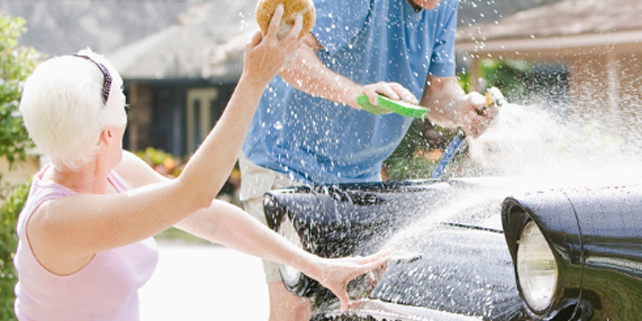Summer car care: Protecting your vehicle from nature’s elements
If you live in a climate that routinely experiences snow and ice in winter, you probably understand the importance of regular car washes to remove road salt. However, when warm weather arrives, are you like me? Do you tend to neglect your vehicle by washing it less? Do you consider a good rain shower an effective car wash?
During summer or in warm climates, certain things can damage your vehicle’s paint. Here are some common culprits:
Tree sap
Have you ever taken a weekend wilderness getaway for some rest and relaxation only to find that when you got home, your vehicle was covered in tree sap? Tree sap is a sugary, sticky substance that can encrust your vehicle’s surface and cause damage.
Pollen
If you’ve approached your vehicle after a day’s work and noticed a yellow powder on it, that’s most likely pollen. Pollen is produced by trees, flowers, grasses, and weeds. If it’s not removed, its acidity can damage your paint.
Bird droppings
If not removed quickly, they can damage your vehicle’s clearcoat and even start bleaching the paint. Definitely get your vehicle washed within 24 hours.
Tar
Have you ever noticed after a road trip or your daily commute that you had streaks of tar on the side of your vehicle? Tar is extremely sticky and may contain gravel. Therefore, it can make removal very difficult, and can cause scratches during the process.
Bugs
Stuck on your windshield, they can make it difficult to see. Stuck to your paint, they can cause damage when they decay due to their acidic properties.
Here are some things you can do to prevent damage:
1. Get your vehicle washed regularly.
Depending on its exposure to the elements, once a week should suffice. Consider purchasing a car wash membership if you want to wash it more frequently.
2. Apply wax regularly.
Waxing your vehicle creates a protective barrier. This barrier not only protects your paint but can make it easier to remove nature’s elements.
3. Apply a ceramic coating.
Ceramic coating not only provides protection against the elements but also provides protection against UV rays and minor scratches and scuffs. If your car sits outside most of the time, UV rays can cause fading.
4. Park strategically.
Pay attention to where you park. Avoid parking under trees for long periods of time. This can help prevent tree sap and bird droppings from falling on your car.
5. Do your research.
Using the correct products to remove the items from your paint can reduce frustration and prevent further damage during removal.
6. Remove promptly.
Time is of the essence with all of these items. If these elements are left on your vehicle for an extended period, removal can be frustrating and difficult, and the quicker you remove them the better it is for your car’s paint.
7. Contact detailing professionals for assistance.
If you’re struggling to remove something or have damage, contact your local detailing shop for assistance. They can provide recommendations.







Leave a Reply
Want to join the discussion?Feel free to contribute!